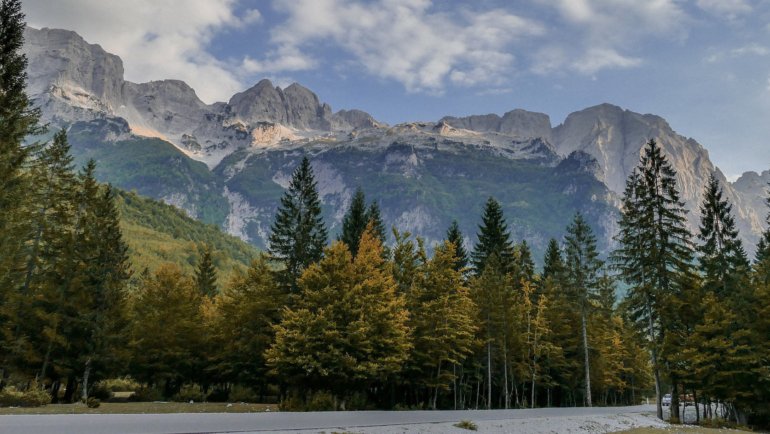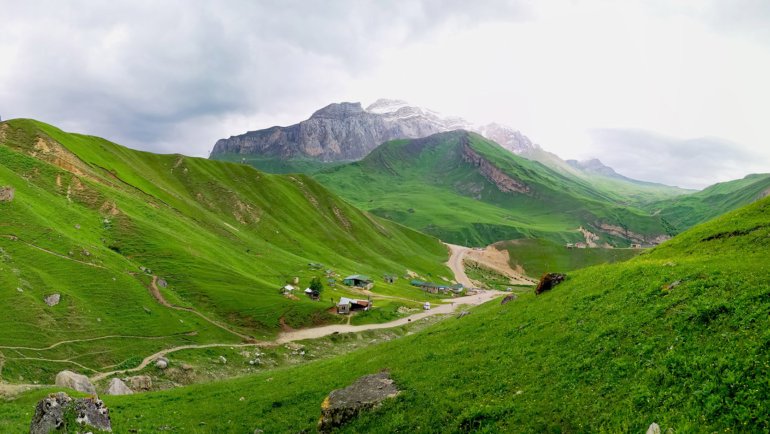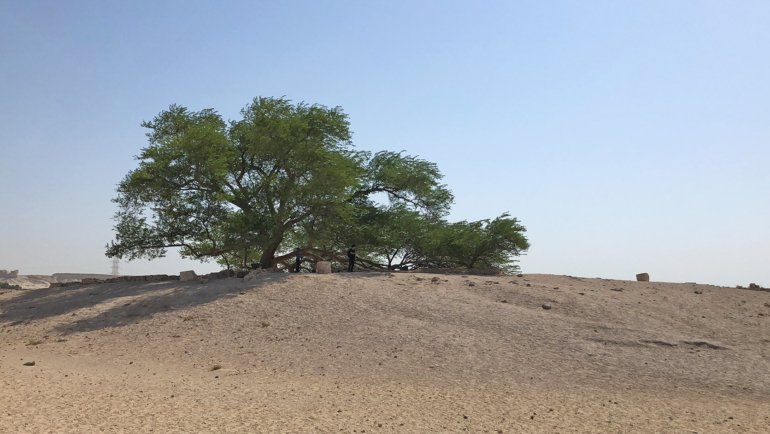Afghanistan is a landlocked country located in the heart of south-central Asia. It’s officially known as the Islamic Emirate of Afghanistan. It’s bordered by China, Tajikistan, Uzbekistan, Turkmenistan, Iran, and Pakistan.
Dry deserts and tall mountains mostly cover the country’s landscape. Many Afghans inhabit the fertile valleys between the mountains, mainly growing crops and rearing animals.
Such a vast and varied landscape with numerous remote regions means Afghanistan is home to diverse wildlife. Some are now greatly reduced in numbers, and others, like the Caspian tiger, Asiatic Lion, and Asiatic cheetah, are no longer found in the country.
The International Union for Conservation of Nature (IUCN) categorizes many of the larger mammals in the country as globally threatened. Nonetheless, a wide variety of wild animals are still roaming the mountains and foothills.
Below you can find a complete list of the top wildlife in Afghanistan.
1. Snow Leopard
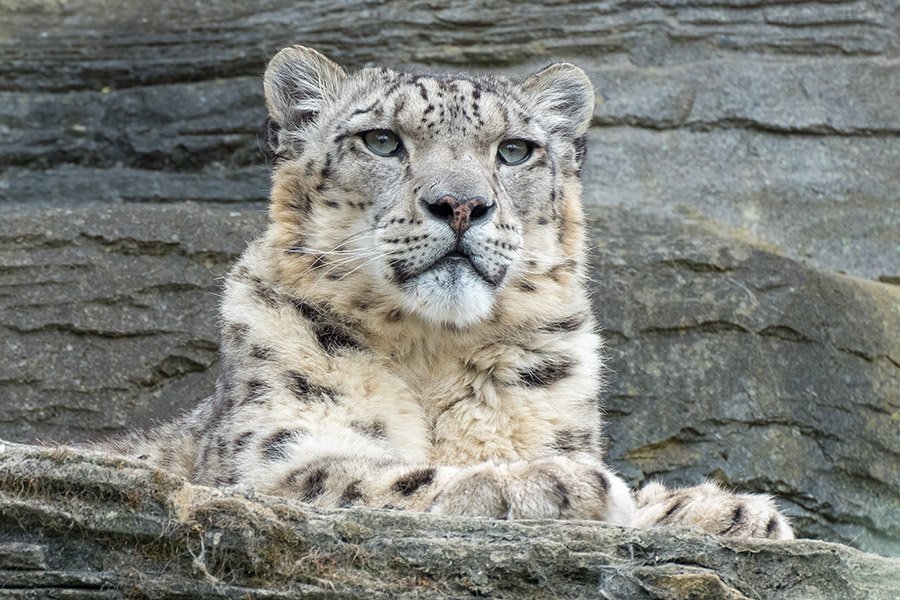
- Scientific name: Panthera uncia
- Type of animal: Mammal
- Where found in the country: Mountains of Afghanistan
- Conservation status: Vulnerable
Commonly referred to as the ounce, the snow leopard is a felid endemic to Central and South Asia mountain ranges. It inhabits the alpine and subalpine zones in Afghanistan. Its thick white-gray coat with large black rosette stripes blends perfectly with Afghanistan’s steep, rocky, high mountains.
They are listed as vulnerable on the IUCN Red List because there are fewer than 10,000 snow leopards globally. Following infrastructural developments, snow leopards are threatened by poaching and habitat destruction. Their population is still expected to decline by about 10% by 2040.
★ Did you know? Snow leopards are sometimes called the “ghost of the mountains” because of their spectacular natural camouflage, rendering them almost invisible in their surroundings.
2. Marco Polo Sheep
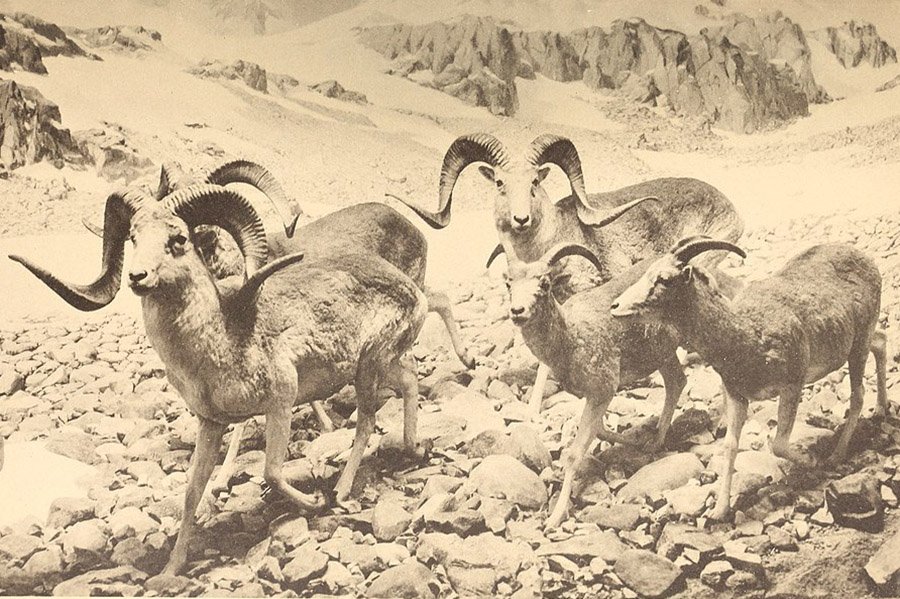 Source: Wikimedia Commons
Source: Wikimedia Commons- Scientific name: Ovis ammon polii
- Type of animal: Mammal
- Where found in the country: Mountainous regions
- Conservation status: Near Threatened
While you’re roaming the mountains of Afghanistan, keep an eye out for the Marco Polo sheep.
These incredible animals are a subspecies of argali sheep named after the legendary explorer Marco Polo because they were described in The Travels of Marco Polo.
They can be distinguished mostly by their long and spiraling horns, measuring up to 55 inches (140 cm).
3. Markhor
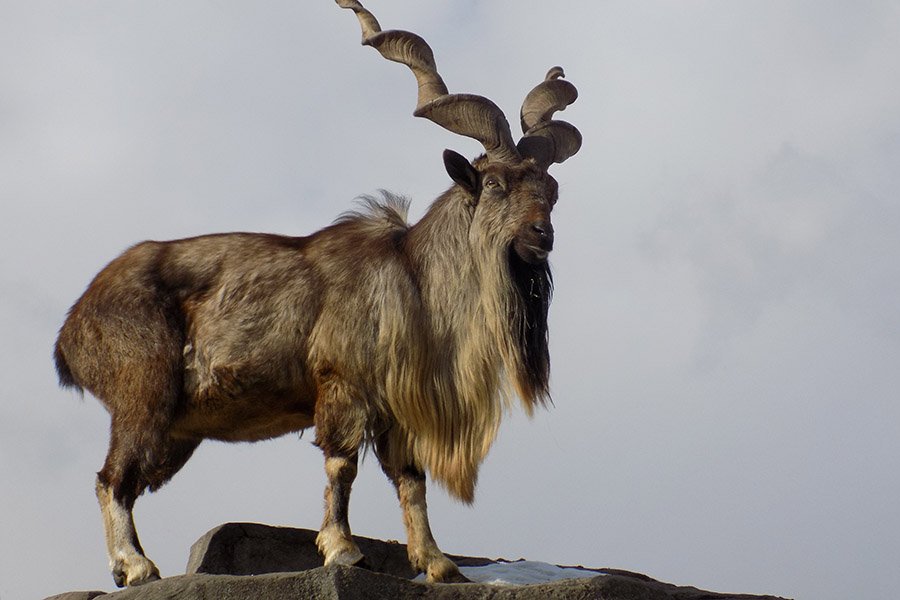
- Scientific name: Capra falconeri
- Type of animal: Mammal
- Where found in the country: Great peaks of Afghanistan’s mountainous regions and scrub forests primarily comprised of oaks.
- Conservation status: Near Threatened
They are a large Capra species that bear a striking resemblance to goats and have unique curly horns.
They are well adapted to the mountainous terrain of Afghanistan and are found between 2,000 and 11,800 ft (600 and 3,600 m) in elevation. They are diurnal, and the best time to catch sight of them is in the early morning and late afternoon when they are active.
★ Did you know? According to the local folklore, people believe that markhor has special abilities, such as being a snake killer or eater.
4. Himalayan Black Bear

- Scientific name: Ursus thibetanus laniger
- Type of animal: Mammal
- Where found in the country: Eastern Forests of Afghanistan
- Conservation status: Vulnerable
Common in the forested areas of Afghanistan, these subspecies of the Asian black bear have a unique black coat, a light brown muzzle, and a white to a pale yellow crescent on their chest.
They are distinguished from the Asian black bear by their long, thicker fur and smaller, whiter chest mark. They are mainly found in the Himalayas, stretching as far as Afghanistan.
They are listed as vulnerable on the IUCN Red List because of their deteriorating population worldwide. Encroachment of the human population, poaching, and forest fires are the main factors that have mainly impacted the population of the Himalayan black bears.
5. Striped Hyena
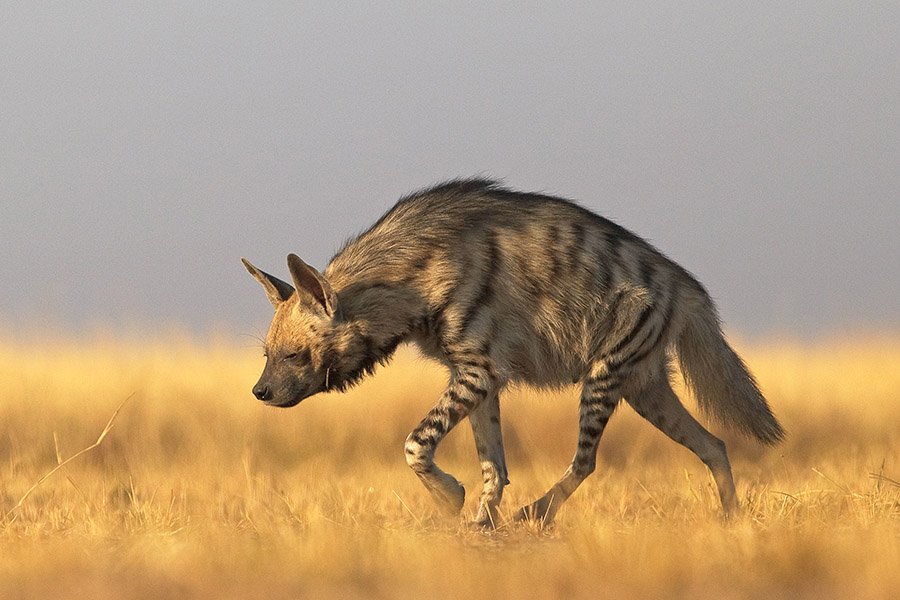
- Scientific name: Hyaena hyaena
- Type of animal: Mammal
- Where found in the country: Rocky scrublands, savannas, and semideserts
- Conservation status: Near Threatened
Striped hyenas are the only extant species in the genus Hyaena. They are listed as near threatened since their worldwide population is currently below 10,000 mature individuals, which continues to experience a huge decline. These species are expected to decrease by 10% over the next three generations.
Striped hyenas are endemic to North and East Africa, the Caucasus, the Indian subcontinent, the Middle East, and Central Asia. They are mainly found in savannas, semideserts, and rocky scrublands.
They prefer habitats with water sources within 6 miles, so they avoid true deserts. They eke out a life in habitats many large predators find it difficult to thrive in.
6. Gray Wolf
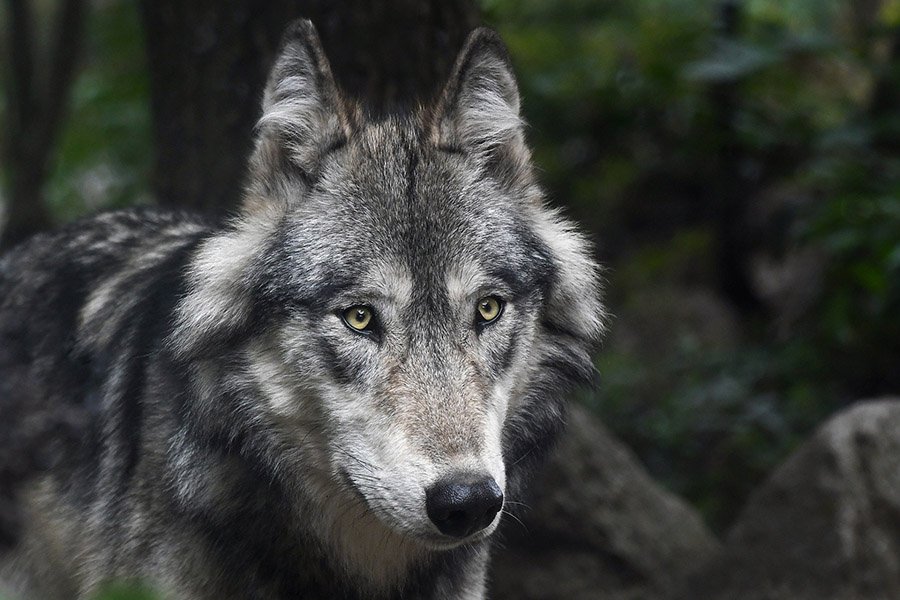
- Scientific name: Canis lupus
- Type of animal: Mammal
- Where found in the country: Mountains and foothills
- Conservation status: Least Concern
These elegant predators are highly intelligent predecessors to our domesticated dogs that are highly intelligent and devoted to family. They are always sighted in family groups.
Gray wolves are the largest extant species in the Canidae family. They can be distinguished from other Canis species by their longer tails, shorter torso, and less pointed ears and muzzles.
As demonstrated by its physical adaptations to tackling large prey, gray wolves are the most specialized Canis species in group game hunting. Catch sight of these majestic creatures across the mountains and foothills of Afghanistan.
★ Did you know? Gray wolves educate their young and care for the injured.
7. Golden Eagle

- Scientific name: Aquila chrysaetos
- Type of animal: Bird
- Where found in the country: Mountains and foothills
- Conservation status: Least Concern
They are one of the largest and the most widely distributed species of eagle. There is a high chance you might set your eyes on a golden eagle in a desert-like mountain range interspersed with forest and surrounded by steppe landscapes.
These birds have a distinct dark brown color blended with a lighter golden-brown plumage on their napes.
★ Did you know? The Golden eagles’ calls sound like a high-pitched scream but are usually quiet most of the time.
8. Siberian Musk Deer
 Source: Wikimedia Commons
Source: Wikimedia Commons- Scientific name: Moschus moschiferus
- Type of animal: Mammal
- Where found in the country: Mountainous regions and shrub-covered slopes
- Conservation status: Vulnerable
Commonly found in the mountainous regions of Afghanistan interspersed with forests, the Siberian musk deer are small deer with fang-like tusks that originate from Siberia.
Throughout history, these shy, nervous, and solitary animals have been hunted to harvest musk, mainly used in manufacturing expensive perfumes.
Instead of growing antlers, a male deer grows tusks during the breeding season, mainly used in competing with other males to attract females. These tusks grow throughout their lives and can reach up to four inches in length.
★ Did you know? It’s thought that the glands of a musk deer can fetch up to $45,000 on the black market.
9. Urial
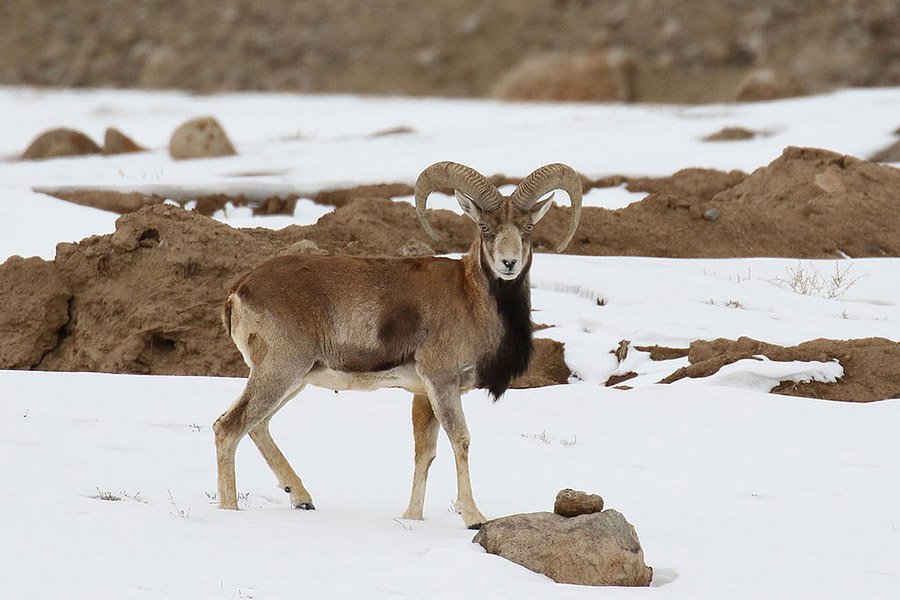 Source: Wikimedia Commons
Source: Wikimedia Commons- Scientific name: Ovis vignei
- Type of animal: Mammal
- Where found in the country: Gentle slopes, open woodlands, and grasslands
- Conservation status: Vulnerable
Also known as shapo or arkars, the urial is a medium-sized species of wild sheep native to Central and South Asia. Its uniquely long, reddish-brown coat fades during the colder seasons.
Males have the most extensive horns, which curl outwards from the top all the way back to somewhere behind the head. Unlike males, females have shorter, compressed horns.
Urials are widely distributed across Afghanistan and can be found in grasslands, gentle slopes, and open woodlands. They also prefer cold arid zones with little vegetation since they have thick, long coats that insulate them from cold winters.
10. Siberian Ibex
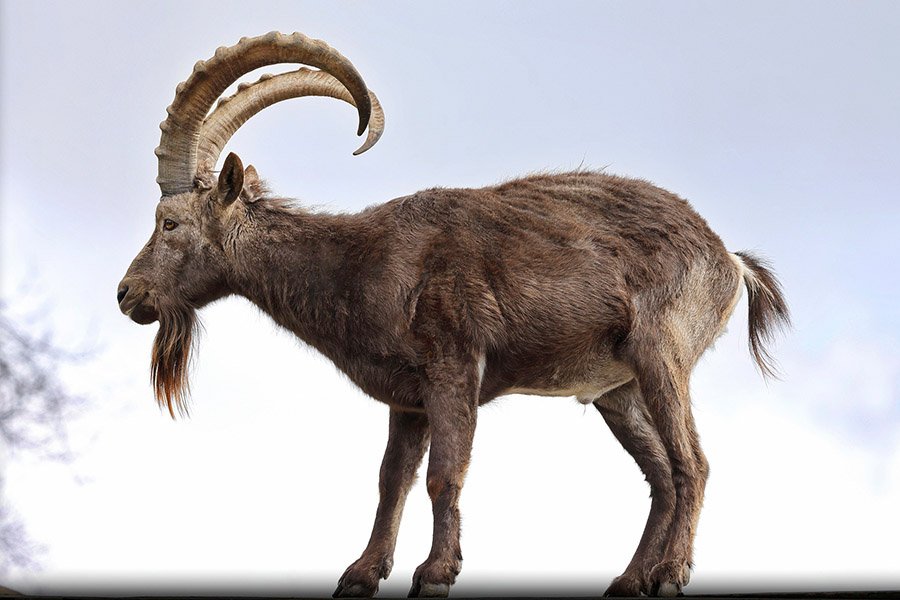
- Scientific name: Capra sibirica
- Type of animal: Mammal
- Where found in the country: Cliffs and mountains
- Conservation status: Near Threatened
An ibex is species of wild goat found in North Africa, Eurasia, and East Africa. There are several subspecies of ibex, including the alpine ibex, Iberian ibex, Siberian ibex, Nubian ibex, and others.
The Siberian ibex is a commonly sighted wild goat in Afghanistan. All ibexes species differ slightly in appearance and size. Nonetheless, all male ibexes are larger and heavier than females. The most distinct feature between sexes is the larger size of a male’s horns.
★ Did you know? The ibexes’ horns emerge as soon as they are born and continue to grow throughout the rest of their lives.
11. Eurasian Lynx
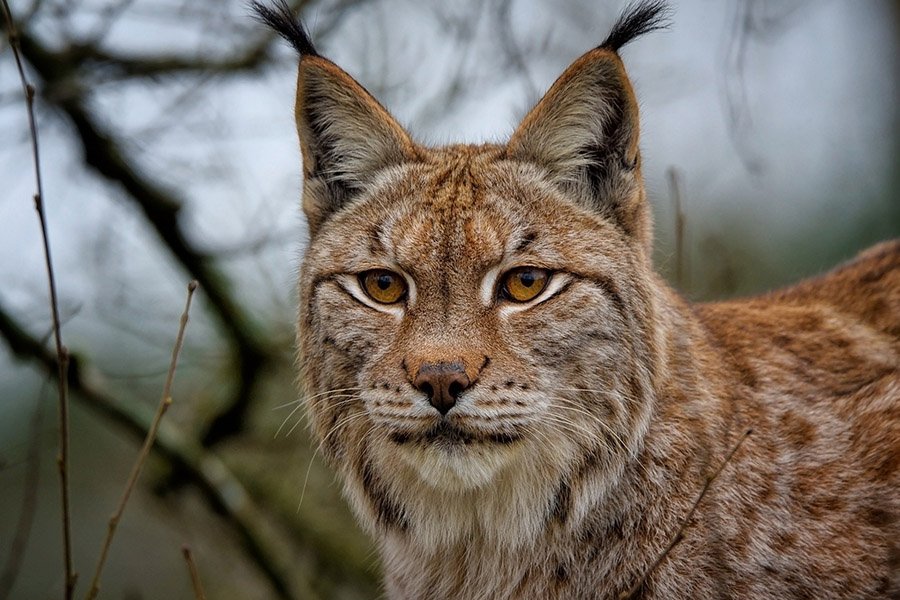
- Scientific name: Lynx lynx
- Type of animal: Mammal
- Where found in the country: Mountainous regions and secluded forests
- Conservation status: Least Concern
The Eurasian lynx is a medium-sized solitary wild cat found all over Europe, Russia, and Asia. They inhabit mountainous regions and secluded forests up to an elevation of 18,000 ft (5,500 m). They are primarily nocturnal and spend the day sleeping in dense thickets.
Eurasian lynx descends to the lowlands in winter to avoid deep snow and in search of prey. Despite their adaptation to moving through snow, these species cannot survive in areas with snow depth exceeding 39 inches (100 cm) because they find loose, deep snow difficult to deal with.
★ Did you know? They have very powerful eyesight that can spot prey 250 feet away.
12. Long-Tailed Marmot
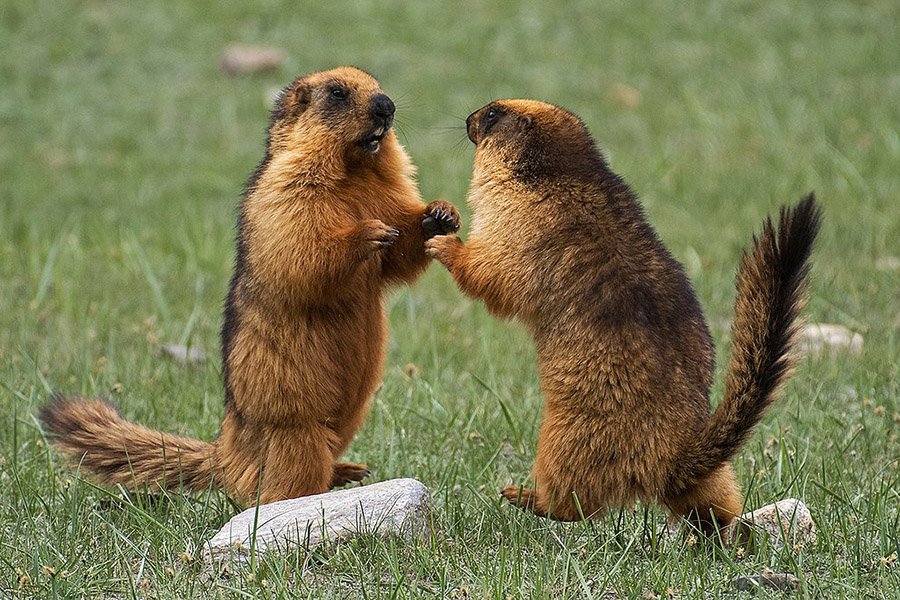 Source: Wikimedia Commons
Source: Wikimedia Commons- Scientific name: Marmota caudata
- Type of animal: Mammal
- Where found in the country: Open or lightly wooded habitats, including foothills and scrublands
- Conservation status: Least Concern
The long-tailed marmot is also referred to as the golden marmot. They are commonly found in the mountainous regions of Afghanistan. As the name suggests, long-tailed marmots are relatively long-tailed species of marmots.
They are sturdy rodents weighing up to 20 lb (9 kg), though their typical weight range between 3.3-16.1 lb (1.5 to 7.3 kg). Males are slightly larger than females.
Even though long-tailed marmots form monogamous relationships, they tend to live in larger social groups of up to seven adults. It’s believed they do so to protect each other from predators.
Final Thoughts
When people think of Afghanistan, they immediately picture over 90% of the world’s opium supply. Opium farming is the main source of employment in the country.
However, Afghanistan has a unique environment, ranging from tall, forbidding mountains to deserts. The jagged mountain peaks are covered by snow most of the year. Afghanistan is a perfect example of a multi-environment with forests and mountains.
All of these areas provide shelter to numerous birds and wild animals. Mountainous regions and foothills are great places to watch for these majestic creatures in Afghanistan.


